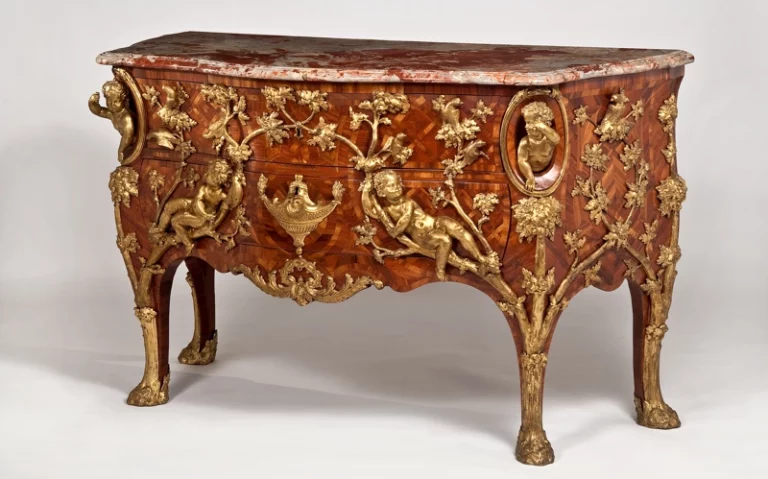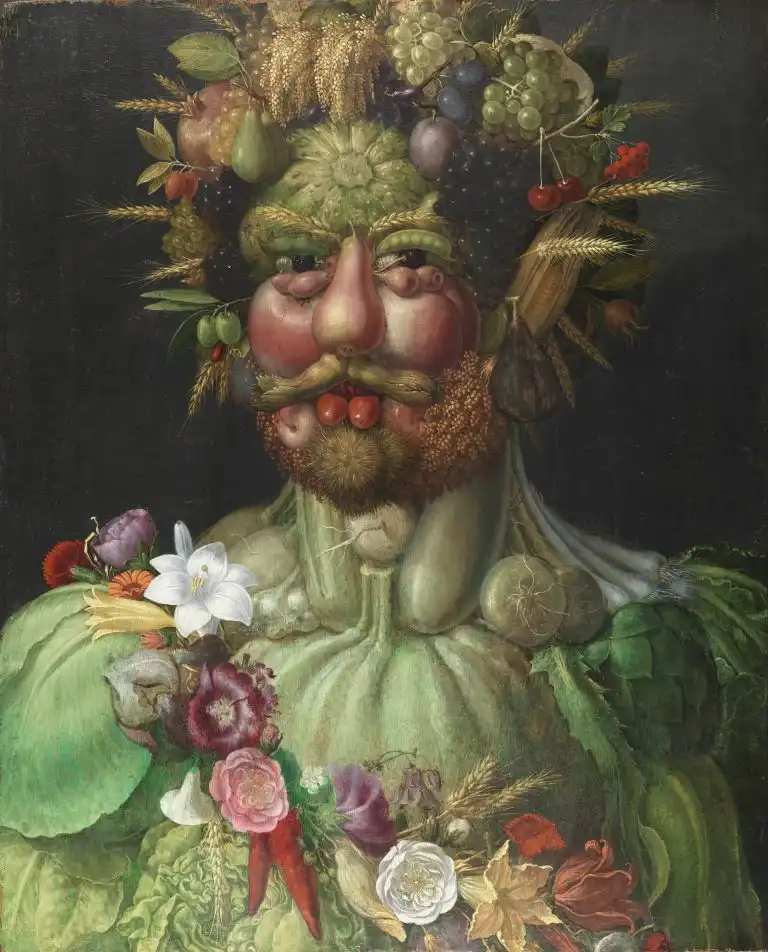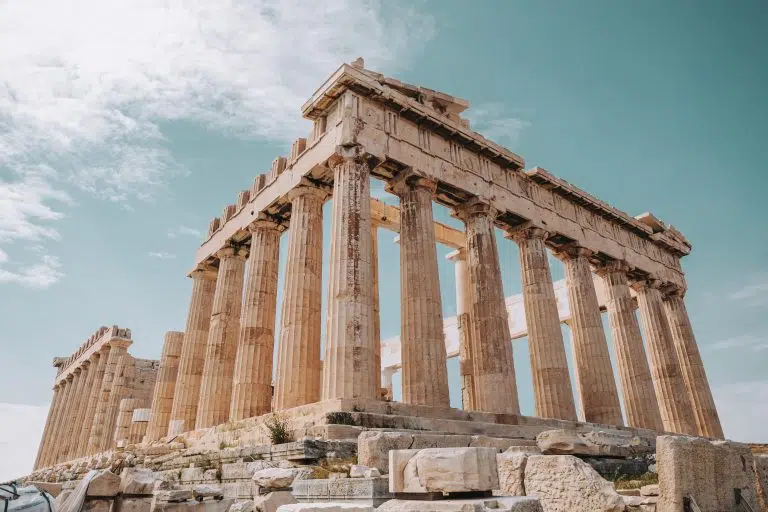Table of Contents
Period: 1730 – 1760
Characteristics: Elegance and ornamentation, lightness and intimacy, masterful use of light
Events: War of Austrian Succession (1740-1748), The Great Awakening (1730s-1740s), Seven Years’ War (1756-1763)
Rococo, a significant art and design style, emerged in the 18th century as a reaction against the grandeur and formality of Baroque art. It symbolised elegance, refinement, and lightheartedness, quickly becoming a popular choice across Europe. Its unique features include intricate, asymmetrical designs, curves, and a strong emphasis on pleasure, leisure, and the pursuit of happiness. In this blog post, we will explore the characteristics of Rococo art and showcase some of the most famous examples from that time, highlighting this art movement’s widespread influence and popularity.
Origins of Rococo
The roots of Rococo can be traced back to the preceding Baroque period, known for its grandeur and drama. As the 18th century dawned, the Baroque style had grown too heavy and formal for many. This led to a fresh movement that aimed to create a more lighthearted, playful, and delicate form of art and design. Thus, Rococo was born, offering a stark contrast to its predecessor.
The term ‘rococo’ derives from the French word ‘rocaille, ‘meaning ‘shell work’ or ‘pebble work.’ This choice of name is a testament to the style’s emphasis on natural forms like shells, flowers, and leaves. Rococo’s lightness, delicacy, and refinement found its true home in the court of Louis XV of France. The king and his advisors, in their pursuit of a style that would mirror the elegance and sophistication of the French court, perfected Rococo, thereby cementing its significance in the art world of the time.
The Rococo style was not only a favourite among the aristocracy but also found a place in the hearts of the burgeoning middle classes of Europe. Its appeal was partly due to its accessibility compared to the grand and imposing Baroque. Rococo’s playful and whimsical nature made it more attractive to the growing number of people seeking a lighter, more fun style. This widespread appeal led to the rapid popularity of Rococo, leaving an indelible mark on the art and design of the time.
Characteristics of Rococo Art
Rococo art, with its intricate, asymmetrical designs and the use of curves and scrolls, exudes a sense of elegance and sophistication. This art movement is a testament to the pursuit of pleasure, leisure, and happiness, and its depiction of aristocratic life, garden parties, masquerades, and other social events is a window into a world of refined beauty. The romanticised images of nature, such as idyllic landscapes and pastoral scenes, and the sensuality and eroticism conveyed through soft, curvaceous forms and suggestive poses further enhance the allure and appreciation of Rococo art.
Examples of Paintings
Rococo paintings were known for their ornate and intricate details, focusing on lightness, playfulness, and whimsy. Two famous examples are Jean-Antoine Watteau’s Pilgrimage to Cythera and François Boucher’s The Toilette of Venus. In both these paintings, you can see the key characteristics of Rococo art. They have lightness and playfulness. You can see the focus on ornate details. The soft, pastel colour palette and flowing lines create a sense of beauty and elegance, while the playful themes and subject matter add a sense of whimsy.
Pilgrimage to Cythera depicts a group of elegantly dressed couples in a lush, idyllic landscape, making their way to the mythical island of love, Cythera. The painting features a pastel colour palette, with soft, feathery brushstrokes that create a dreamlike atmosphere. The figures in the painting are depicted with grace and elegance, flowing lines and smooth curves. Their clothing is ornate and detailed, with intricate patterns and delicate fabrics.
Similarly, The Toilette of Venus features a pastel colour palette and soft, flowing lines. The painting depicts the goddess Venus surrounded by a group of cherubs helping her prepare for the day. Venus is shown undressed, with her flowing hair and soft curves on display. With their playful gestures and mischievous expressions, the cherubs are depicted with a sense of playfulness and joy.
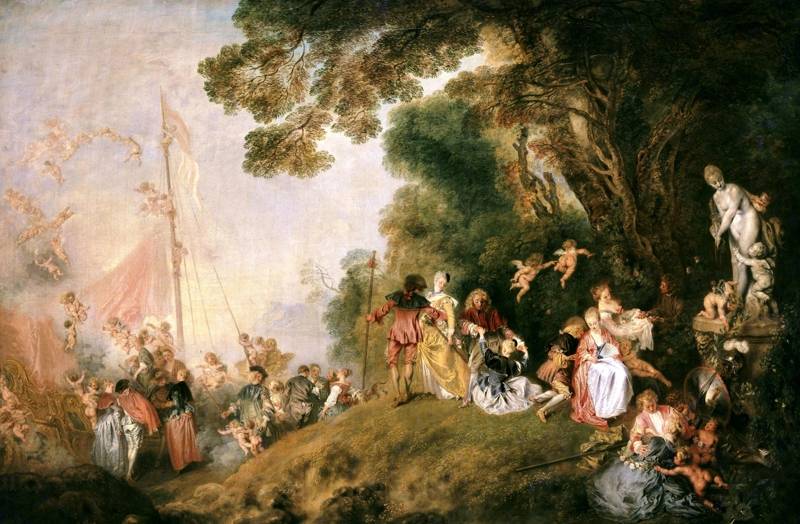
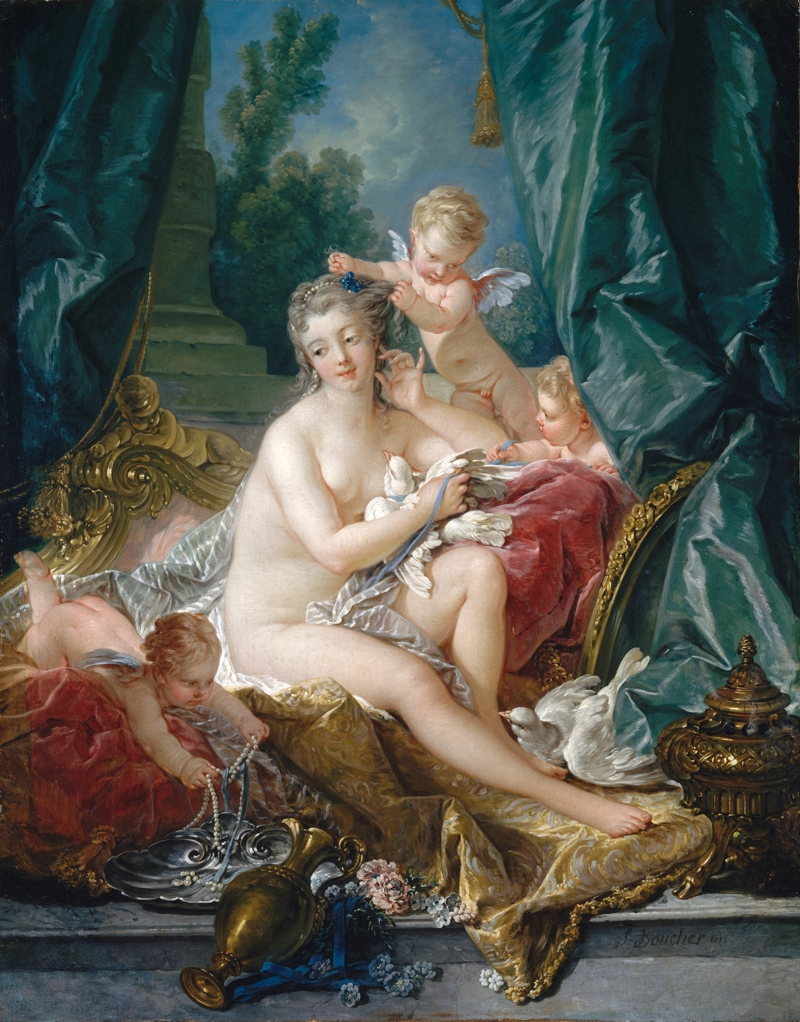
Examples of Sculptures
As was typical for this era, sculptures significantly departed from the Baroque era’s grandeur and religious themes. This shift, from the Baroque’s monumental public sculptures to the Rococo’s more intimate, cheerful, and secular artworks, was a defining moment in the artistic ethos, one that enlightens us about the changing cultural landscape of the time.
Key sculptors of this era, such as Jean-Baptiste Pigalle and Étienne-Maurice Falconet, demonstrated a mastery of their craft that is truly awe-inspiring. Their works, with their unique dynamism and sensuality, reflected a broader cultural transition towards indulgence, sophistication, and a palpable lightness of form and theme. Rococo sculptures are celebrated for their exceptional intricacy, joyous, often whimsical themes and unabashedly asymmetrical shapes, breaking free from the more rigid conventions of the past.
For instance, Jean-Baptiste Pigalle’s notable work, Mercury Attaching His Wings, beautifully captures the vivacity and lively forms typical of Rococo artistry. The sculpture depicts the god Mercury in mid-action, elegantly contorted as he fastens his winged sandals, symbolising the god’s agility and swiftness. The scene is filled with energy and grace, reflecting the Rococo predilection for elegance, movement, and lighthearted playfulness.
Similarly, Étienne-Maurice Falconet’s sculpture, The Menacing Cupid, is a delightful testament to the joy and whimsy of Rococo. This piece presents a whimsical interpretation of Cupid, the god of love. With a mischievous expression and a finger pressed to his lips, Cupid seems poised amid a playful, secretive act. The sculpture captures a snapshot of the god’s playful antics, beautifully rendering the lively spirit and lightheartedness central to the Rococo style, uplifting and entertaining the viewer.
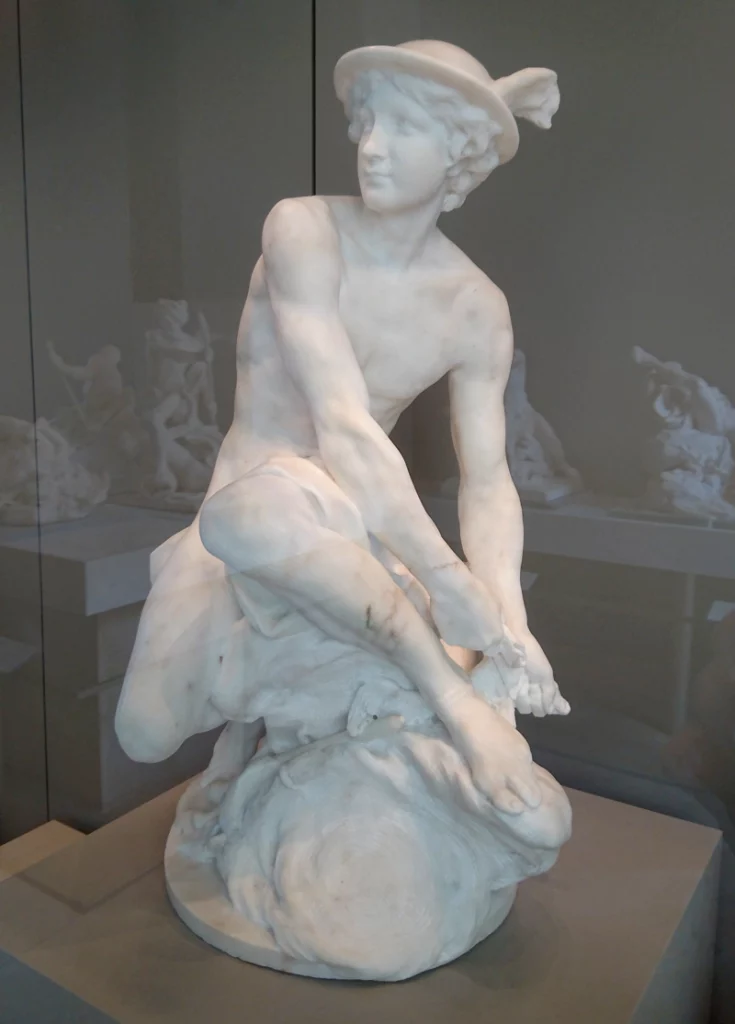

Examples of Architecture
The Rococo period’s architectural style, with its unique blend of natural curves, asymmetry, and decorative motifs inspired by nature, is a captivating journey into the world of art and design. In Rococo buildings, architects masterfully used mirrors as decorative elements and strategic tools, enhancing the sense of spaciousness and creating a visual spectacle. Using an oval blueprint, with its recessed alcoves, added an extra dimension of depth and intimacy. Ornamentation, a hallmark of the period, adorned walls, ceilings, and mouldings with intricate carvings, elaborate plasterwork, and mural paintings, further enhancing the charm of Rococo.
The Amalienburg hunting lodge in Germany, a masterpiece of Rococo architecture, was designed by the skilled and creative François de Cuvillian. This small pavilion is a testament to Rococo’s love for intricate detail and whimsical design. Its hall of mirrors, a particular highlight, features light blue walls adorned with silver detailing, creating an ethereal atmosphere that is a true marvel of architectural creativity.
On the other hand, the Petit Trianon at Versailles, France, designed by Ange-Jacques Gabriel, offers a gentler glimpse into Rococo’s charm. This exquisite château features light-infused exteriors, finely crafted mouldings, and graceful forms that ebb and flow like a visual symphony. The structure embodies the Rococo period’s softer side, showcasing a delicate balance between grandeur and subtlety, decoration and form. Its interiors are adorned with delicate pastel colours, ornate furniture, and intricate plasterwork, all characteristic of the Rococo style.
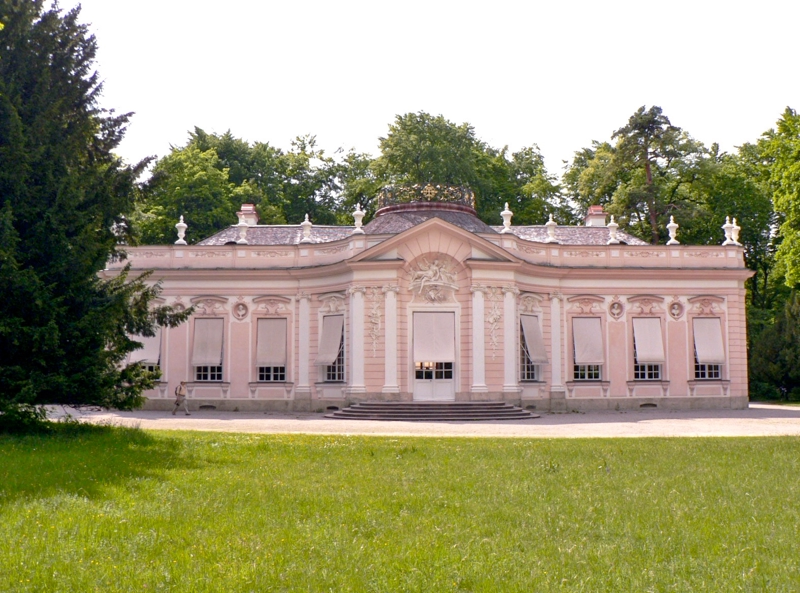
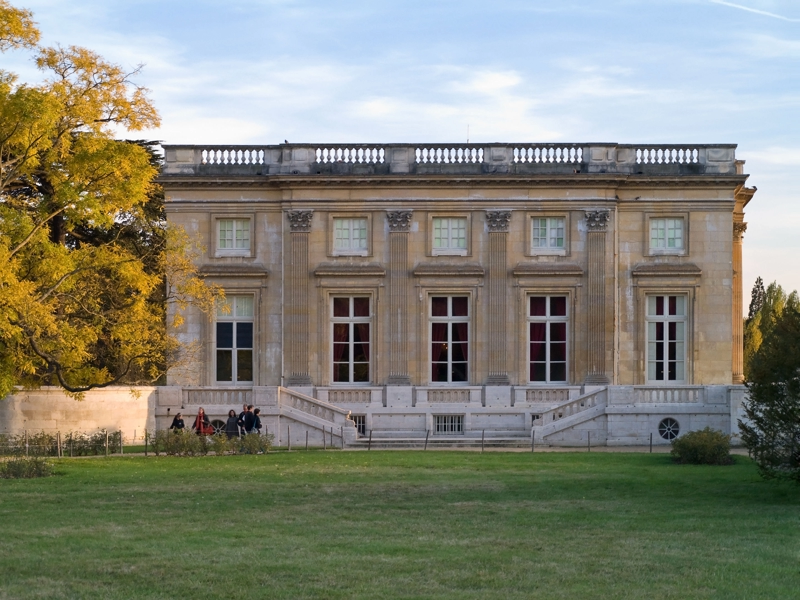
Conclusion
The Rococo art style is a testament to the human desire for beauty, playfulness, and refinement. Its emphasis on natural forms, intricate details, and sensual themes reflects the changing cultural and social attitudes of the 18th century. While the Rococo era may have passed, it has left a profound and lasting mark on the art and design of the time, continuing to inspire and shape contemporary artists and designers. The influence of Rococo art on modern art and design is undeniable, reminding us to embrace pleasure, joy, and beauty in our lives and inspiring us to appreciate the enduring legacy of this art style.

